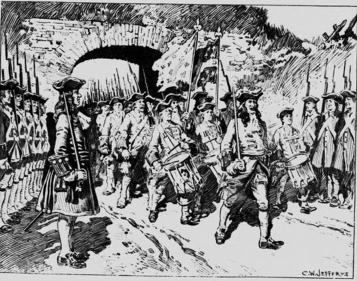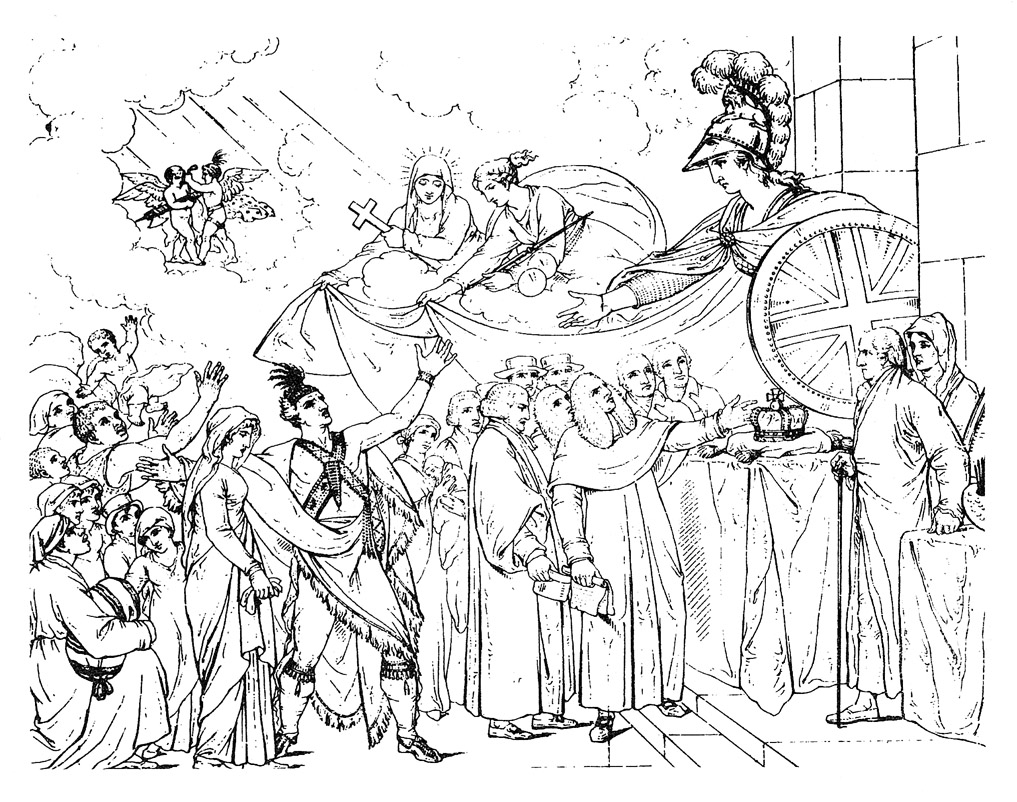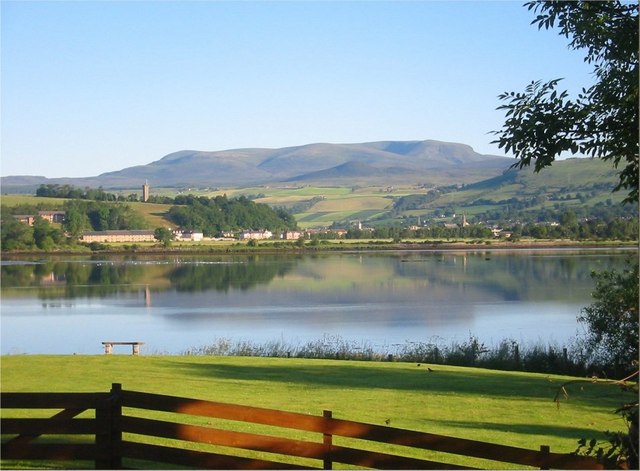|
Victoria County, Nova Scotia
Victoria County is an historical county and census division of Nova Scotia, Canada. Local government is provided by the Municipality of the County of Victoria and the Wagmatcook 1 reserve. History Named after Queen Victoria, it was established by statute in 1851. Cape Breton County was divided into two separate counties in that year, with the northern portion becoming Victoria County. Like other parts of Nova Scotia, the county was sparsely inhabited by the Miꞌkmaq, who hunted in the area. The earliest settlers of Victoria County were almost exclusively Loyalists, with most arriving from the United States in the years following the American Revolutionary War. It was noted by historian G.G. Patterson in 1885 that "In (Queen Victoria's) broad domain upon which the sun never sets, we venture to say there dwell none more loyal than (Victoria County's) few thousand inhabitants". The man responsible for the early settling of Victoria County is widely considered to be Capt. Jon ... [...More Info...] [...Related Items...] OR: [Wikipedia] [Google] [Baidu] |
Nova Scotia
Nova Scotia is a Provinces and territories of Canada, province of Canada, located on its east coast. It is one of the three Maritime Canada, Maritime provinces and Population of Canada by province and territory, most populous province in Atlantic Canada, with an estimated population of over 1 million as of 2024; it is also the second-most densely populated province in Canada, and second-smallest province by area. The province comprises the Nova Scotia peninsula and Cape Breton Island, as well as 3,800 other coastal islands. The province is connected to the rest of Canada by the Isthmus of Chignecto, on which the province's land border with New Brunswick is located. Nova Scotia's Capital city, capital and largest municipality is Halifax, Nova Scotia, Halifax, which is home to over 45% of the province's population as of the 2021 Canadian census, 2021 census. Halifax is the List of census metropolitan areas and agglomerations in Canada, twelfth-largest census metropolitan area in ... [...More Info...] [...Related Items...] OR: [Wikipedia] [Google] [Baidu] |
Loyalist (American Revolution)
Loyalists were refugee colonists from Thirteen Colonies, thirteen of the 20 British American colonies who remained loyal to the British Crown, British crown during the American Revolution, often referred to as Tories, Royalists, or King's Men at the time. They were opposed by the Patriot (American Revolution), Patriots or Whigs, who supported the revolution and considered them "persons inimical to the liberties of America." Prominent Loyalists repeatedly assured the Government of the United Kingdom, British government that many thousands of them would spring to arms and fight for the Crown. The British government acted in expectation of that, especially during the Southern theater of the American Revolutionary War, Southern campaigns of 1780 and 1781. Britain was able to effectively protect the people only in areas where they had military control, thus the number of military Loyalists was significantly lower than what had been expected. Loyalists were often under suspicion of t ... [...More Info...] [...Related Items...] OR: [Wikipedia] [Google] [Baidu] |
Canadians
Canadians () are people identified with the country of Canada. This connection may be residential, legal, historical or cultural. For most Canadians, many (or all) of these connections exist and are collectively the source of their being ''Canadian''. Canada is a multilingual and multicultural society home to people of groups of many different ethnic, religious, and national origins, with the majority of the population made up of Old World immigrants and their descendants. Following the initial period of French and then the much larger British colonization, different waves (or peaks) of immigration and settlement of non-indigenous peoples took place over the course of nearly two centuries and continue today. Elements of Indigenous, French, British, and more recent immigrant customs, languages, and religions have combined to form the culture of Canada, and thus a Canadian identity and Canadian values. Canada has also been strongly influenced by its linguistic, geograph ... [...More Info...] [...Related Items...] OR: [Wikipedia] [Google] [Baidu] |
Scottish Canadian
Scottish Canadians () are people of Scottish descent or heritage living in Canada. As the third-largest ethnic group in Canada and amongst the first Europeans to settle in the country, Scottish people have made a large impact on Canadian culture since colonial times. According to the 2016 Census of Canada, the number of Canadians claiming full or partial Scottish descent is 4,799,010, or 13.93% of the nation's total population. Prince Edward Island has the highest population of Scottish descendants at 41%. The Scots-Irish Canadians are a similar ethnic group. They descended from Lowland Scots and Northern English people via Ulster and so some observe many of the same traditions as Scots. Categorically, Scottish Canadians comprise a subgroup of British Canadians which is a further subgroup of European Canadians. History Early Scottish settlement Scottish people have a long history in Canada, dating back several centuries. Many towns, rivers, and mountains have been named ... [...More Info...] [...Related Items...] OR: [Wikipedia] [Google] [Baidu] |
Canada 2011 Census
The 2011 Canadian census was a detailed enumeration of the Canadian population on May 10, 2011. Statistics Canada, an agency of the Canadian government, conducts a nationwide census every five years. In 2011, it consisted of a mandatory short form census questionnaire and an inaugural National Household Survey (NHS), a voluntary survey which replaced the mandatory long form census questionnaire; this substitution was the focus of much controversy. Completion of the (short form) census is mandatory for all Canadians, and those who do not complete it may face penalties ranging from fines to prison sentences. The Statistics Act mandates a Senate and/or House of Commons (joint) committee review of the opt-in clause (for the release of one's census records after 92 years) by 2014. The 2011 census was the fifteenth decennial census and, like other censuses, was required by section 8 of the '' Constitution Act, 1867''. As with other decennial censuses, the data was used to adjust fe ... [...More Info...] [...Related Items...] OR: [Wikipedia] [Google] [Baidu] |
Canada 2006 Census
The 2006 Canadian census was a detailed enumeration of the Canadian population. Census day was May 16, 2006. The following census was the 2011 census. Canada's total population enumerated by the 2006 census was 31,612,897. This count was lower than the official July 1, 2006 population estimate of 32,623,490 people. The previous census was the 2001 census and the following census was in 2011 census. Summary Over 12.7 million households, 32.5 million people were expected to be counted. Canada Post delivered census forms by mail to 70% of the country, primarily residents in urban areas. Census enumerators delivered to the remaining 30% of households. Every fifth home received the long questionnaire (53 questions versus 8 questions on the short form). For the first time, Canadian residents were able to go online to fill in their forms. Statistics Canada expected approximately 20% of households to file their surveys electronically. Persistent census staff are contacting tardy ho ... [...More Info...] [...Related Items...] OR: [Wikipedia] [Google] [Baidu] |
Canada 2001 Census
The 2001 Canadian census was a detailed enumeration of the Canadian population. Census day was May 15, 2001. On that day, Statistics Canada attempted to count every person in Canada. The total population count of Canada was 30,007,094. This was a 4% increase over 1996 census of 28,846,761. In contrast, the official Statistics Canada population estimate for 2001 was 31,021,300. This is considered a more accurate population number than the actual count. The previous census was the 1996 census and the following census was in 2006 census. Canada by the numbers A summary of information about Canada. Census summary Canada has experienced one of the smallest census-to-census growth rates in its population. From 1996 to 2001, the nation's population increased only 4.0%. The census counted 30,007,094 people on May 15, 2001, compared with 28,846,761 on May 14, 1996. Only three provinces and one territory had growth rates above the national average. Alberta's population soar ... [...More Info...] [...Related Items...] OR: [Wikipedia] [Google] [Baidu] |
Canada 1996 Census
The 1996 Canadian census was a detailed enumeration of the Canadian population. Census day was May 14, 1996. On that day, Statistics Canada attempted to count every person in Canada. The total population count of Canada was 28,846,761. This was a 5.7% increase over the 1991 census of 27,296,859. The previous census was the 1991 census and the following census was in 2001 census. Canada by the numbers A summary of information about Canada. Population by province Demographics Mother tongue Population by mother tongue of Canada's official languages: Aboriginal peoples Population of Aboriginal peoples in Canada: Ethnic origin Population by ethnic origin. Only those origins with more than 250,000 respondents are included here. This is based entirely on self reporting. Visible minorities Age Population by age: See also * List of population of Canada by years * Demographics of Canada * Ethnic groups in Canada * History of immigration to Canada * Population ... [...More Info...] [...Related Items...] OR: [Wikipedia] [Google] [Baidu] |
Statistics Canada
Statistics Canada (StatCan; ), formed in 1971, is the agency of the Government of Canada commissioned with producing statistics to help better understand Canada, its population, resources, economy, society, and culture. It is headquartered in Ottawa.Statistics Canada, 150 Tunney's Pasture Driveway Ottawa, Ontario K1A 0T6; Statistique Canada 150, promenade du pré Tunney Ottawa, Ontario K1A 0T6 The agency is led by the chief statistician of Canada, currently André Loranger, who assumed the role on an interim basis on April 1, 2024 and permanently on December 20, 2024. StatCan is accountable to Parliament through the minister of Innovation, Science and Industry, currently Mélanie Joly. Statistics Canada acts as the national statistical agency for Canada, and Statistics Canada produces statistics for all the provinces as well as the federal government. In addition to conducting about 350 active surveys on virtually all aspects of Canadian life, the '' Statistics Act'' man ... [...More Info...] [...Related Items...] OR: [Wikipedia] [Google] [Baidu] |
2021 Canadian Census
The 2021 Canadian census was a detailed enumeration of the Canada, Canadian population with a reference date of May 11, 2021. It follows the 2016 Canadian census, which recorded a population of 35,151,728. The overall response rate was 98%, which is slightly lower than the response rate for the 2016 census. It recorded a population of 36,991,981, a 5.2% increase from 2016. It will be succeeded by 2026 Canadian census, Canada's 2026 census. Planning Consultation on census program content was from September 11 to December 8, 2017. The census was conducted by Statistics Canada, and was contactless as a result of the COVID-19 pandemic in Canada. The agency had considered delaying the census until 2022. About 900 supervisors and 31,000 field enumerators were hired to conduct the door-to-door survey of individuals and households who had not completed the census questionnaire by late May or early June. Canvassing agents wore masks and maintained a physical distance to comply with COV ... [...More Info...] [...Related Items...] OR: [Wikipedia] [Google] [Baidu] |
Dingwall In 2010
Dingwall (, ) is a town and a royal burgh in the Highland council area of Scotland. It has a population of 5,491. It was an east-coast harbour that now lies inland. Dingwall Castle was once the biggest castle north of Stirling. On the town's present-day outskirts lies Tulloch Castle, parts of which may date back to the 12th century. In 1411 the Battle of Dingwall is said to have taken place between the Clan Mackay and the Clan Donald. History Early history Its name, derived from the Scandinavian (field or meeting-place of the ''thing'', or local assembly; compare Tynwald, Tingwall, Thingwall in the British Isles alone, plus many others across northern Europe), preserves the Viking connections of the town; Gaels call it (), meaning "the mouth of the Peffery" or meaning "cabbage town". The site of the , and of the medieval Moothill, thought to have been established by the Vikings after they invaded in the 8th century, lies beneath the Cromartie memorial. Early middle ... [...More Info...] [...Related Items...] OR: [Wikipedia] [Google] [Baidu] |
Colony Of Virginia
The Colony of Virginia was a British Empire, British colonial settlement in North America from 1606 to 1776. The first effort to create an English settlement in the area was chartered in 1584 and established in 1585; the resulting Roanoke Colony lasted for three attempts totaling six years. In 1590, the colony was abandoned. But nearly 20 years later, the colony was re-settled at Jamestown, Virginia, Jamestown, not far north of the original site. A second charter was issued in 1606 and settled in 1607, becoming the first enduring English colonial empire, English colony in North America. It followed failed attempts at settlement on Newfoundland (island), Newfoundland by Sir Humphrey GilbertGilbert (Saunders Family), Sir Humphrey" (history), ''Dictionary of Canadian Biography'' Online, University of Toronto, May 2, 2005 in 1583 and the Roanoke Colony (in modern eastern North Carolina) by Sir Walter Raleigh in the late 1580s. The founder of the Jamestown colony was the Virginia Co ... [...More Info...] [...Related Items...] OR: [Wikipedia] [Google] [Baidu] |




